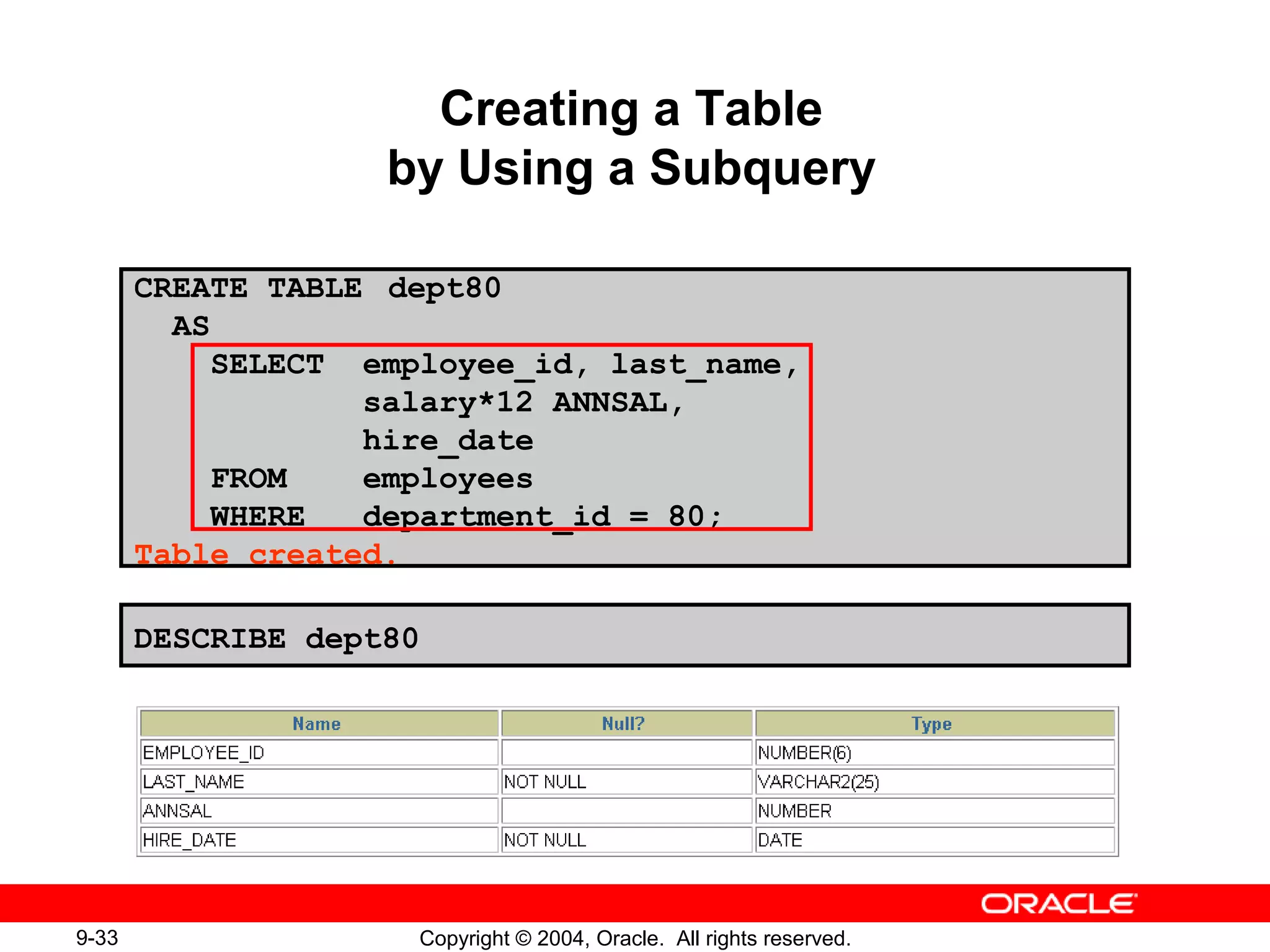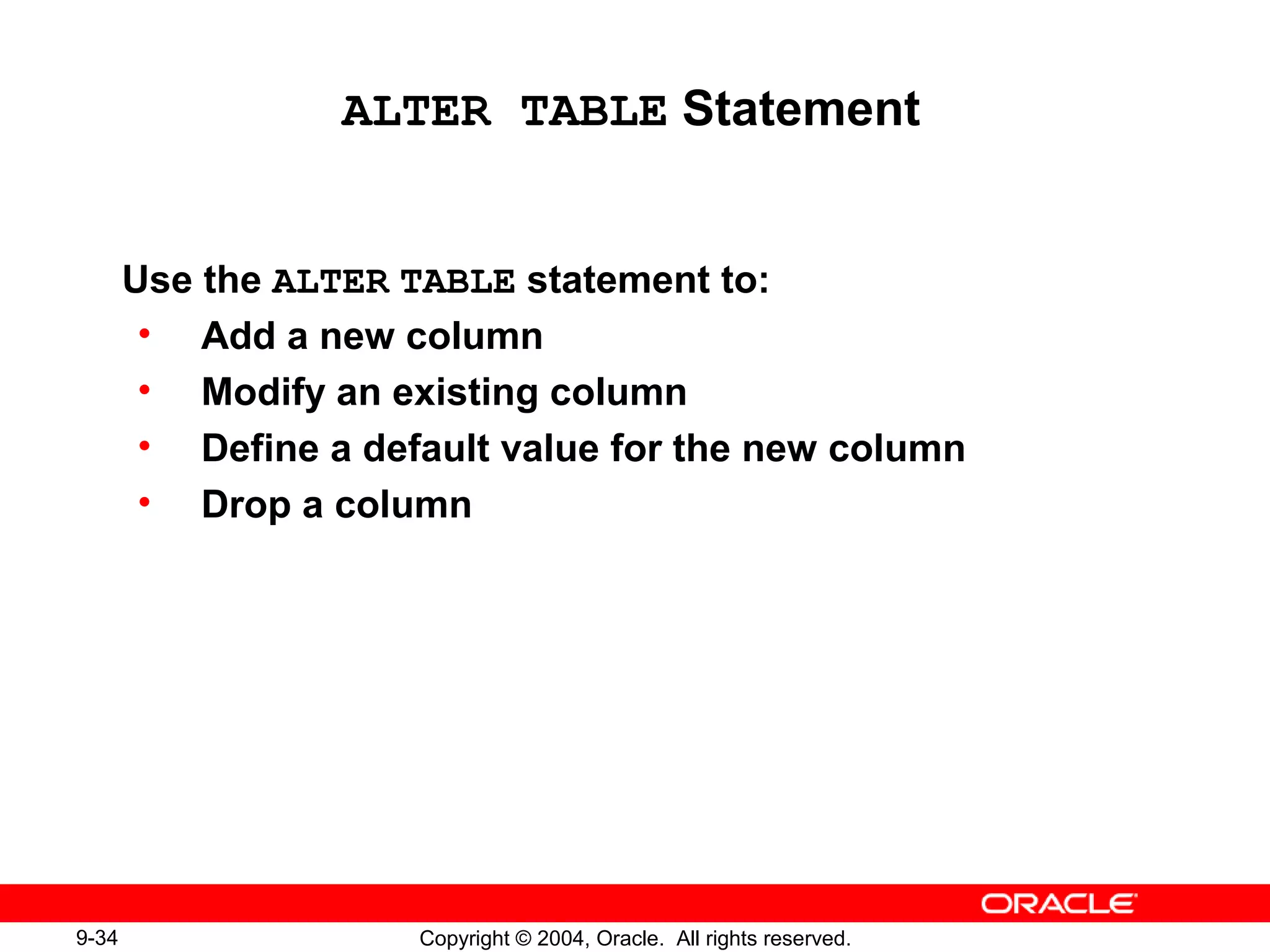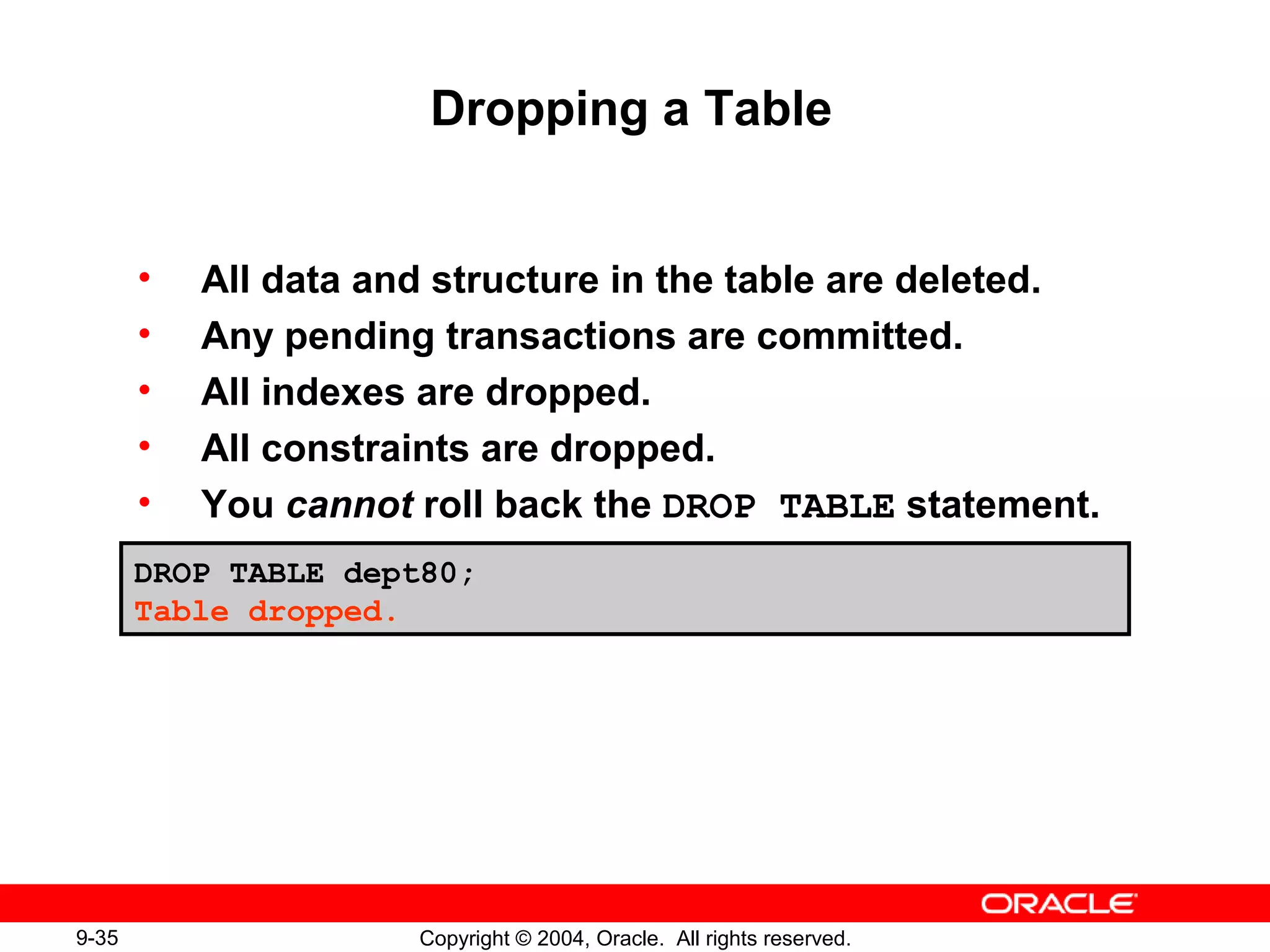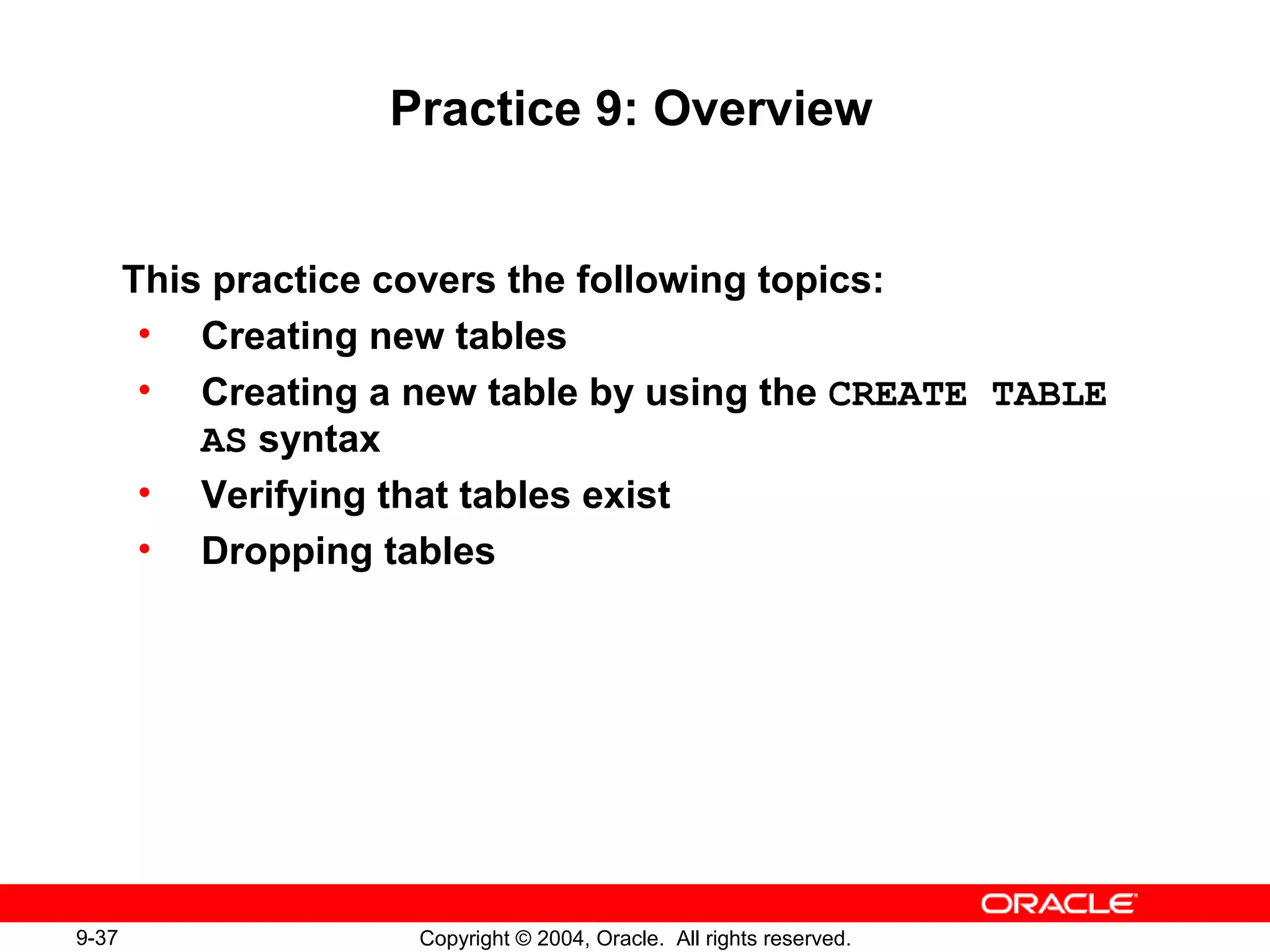This document discusses how to create and manage database tables using data definition language (DDL) statements in Oracle. It covers how to create tables, add columns and constraints, reference other users' tables, and drop tables. The key database objects are described as are the various data types, datetime data types, and constraint types that can be used when defining tables. Examples are provided for creating tables with different constraints.

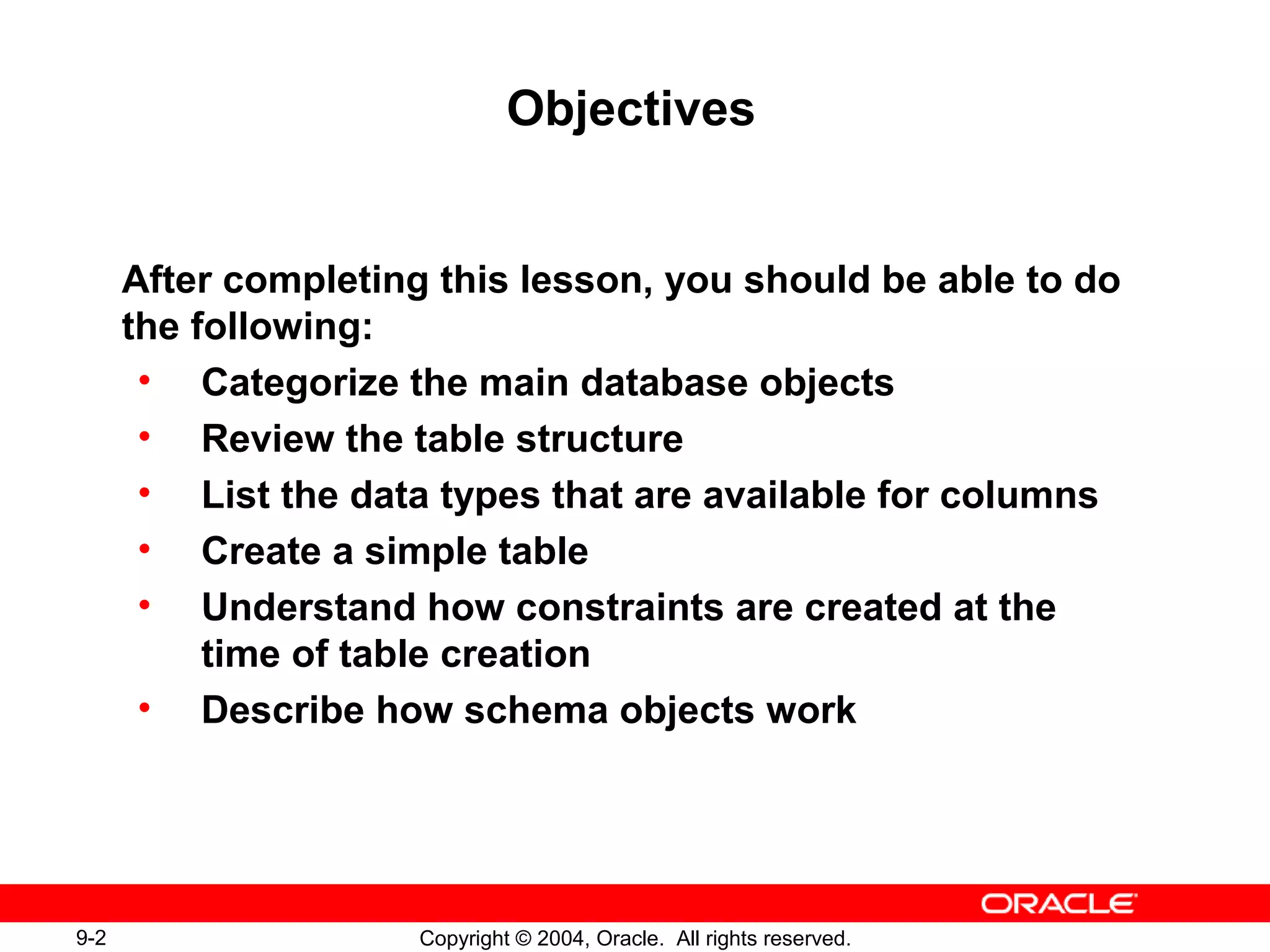
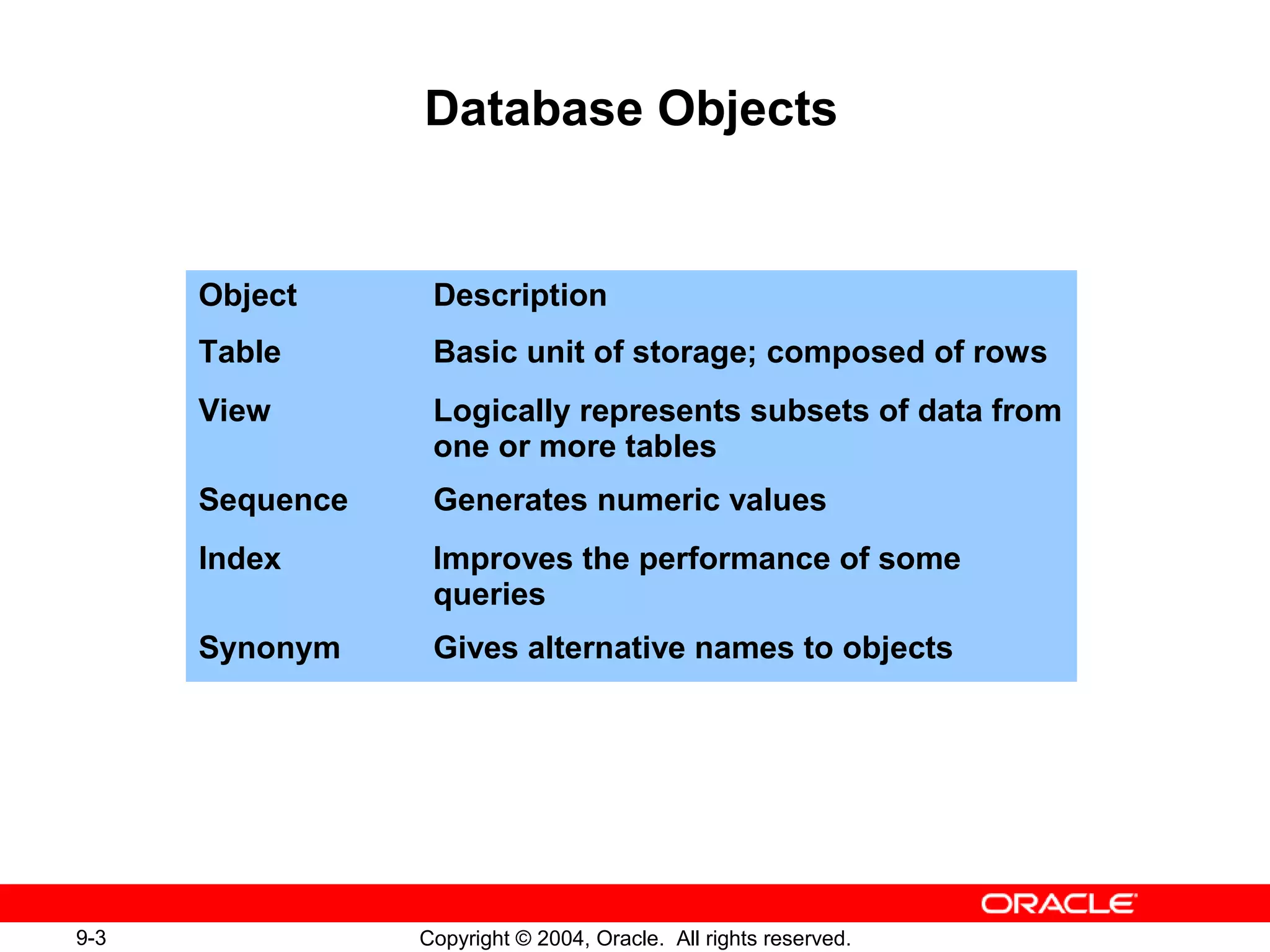
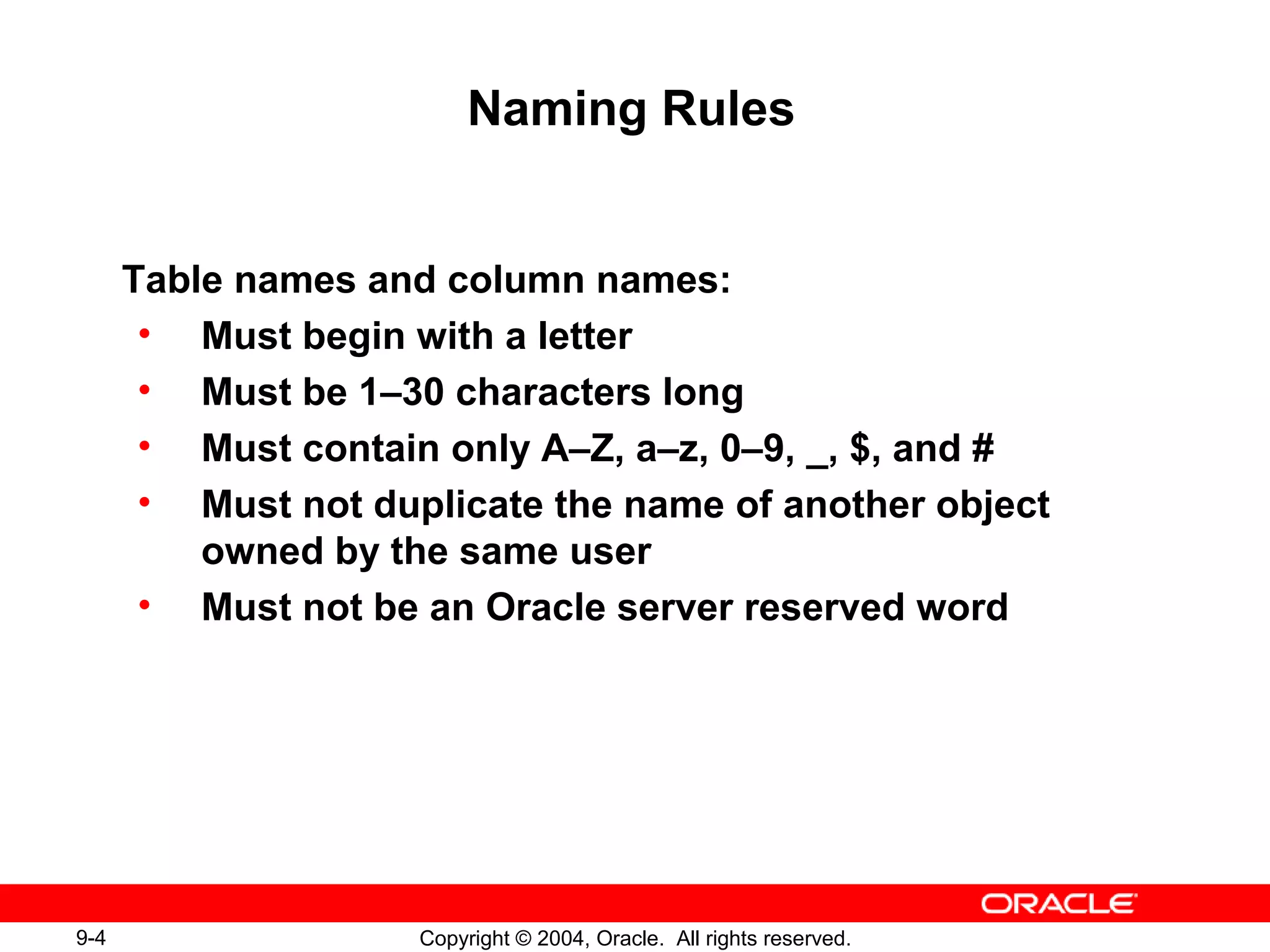
![9-5 Copyright © 2004, Oracle. All rights reserved.
• You must have:
– CREATE TABLE privilege
– A storage area
• You specify:
– Table name
– Column name, column data type, and column size
CREATE TABLE Statement
CREATE TABLE [schema.]table
(column datatype [DEFAULT expr][, ...]);](https://image.slidesharecdn.com/les09-100209113551-phpapp01-140417175950-phpapp02/75/plsql-Les09-5-2048.jpg)
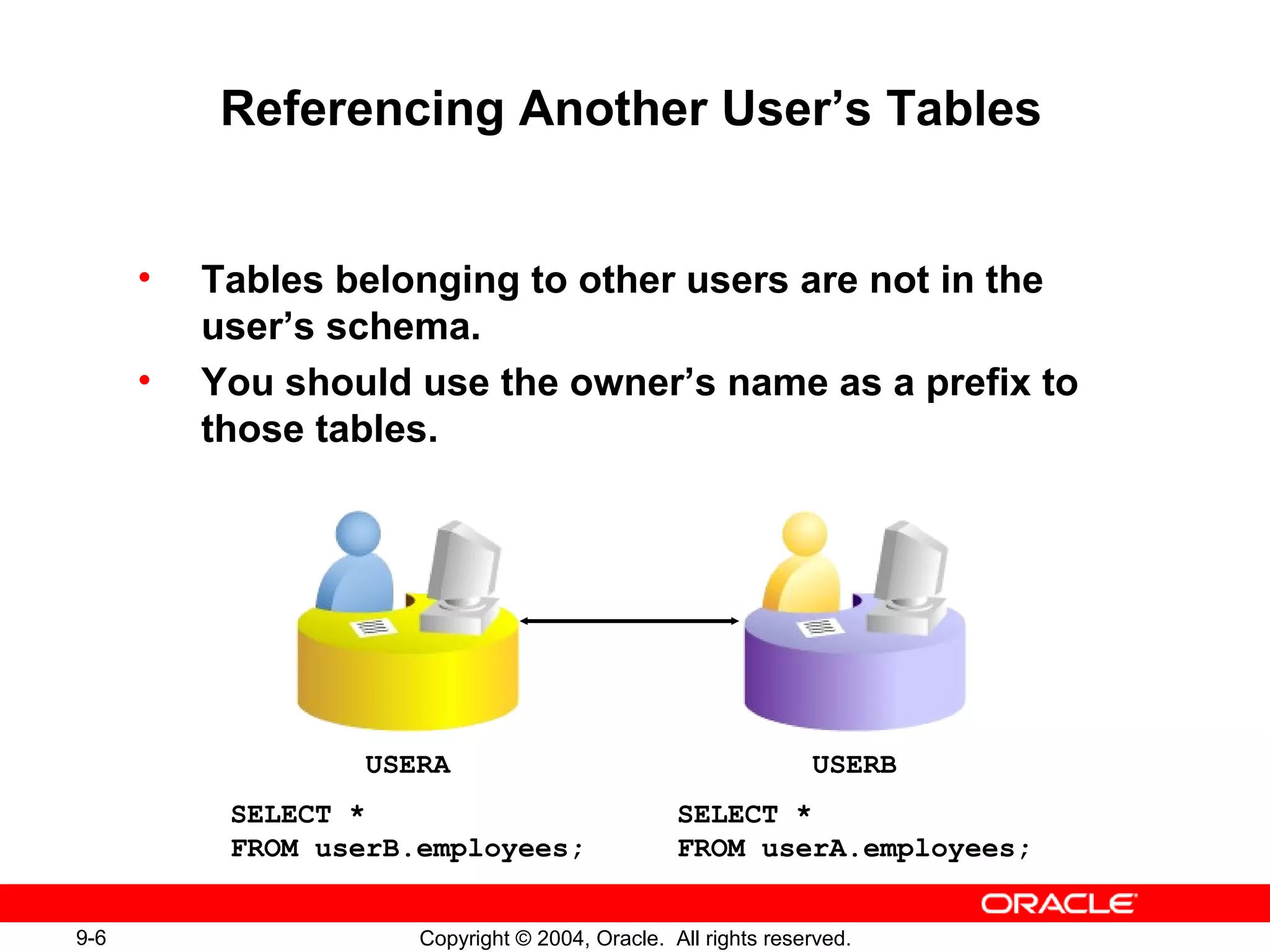
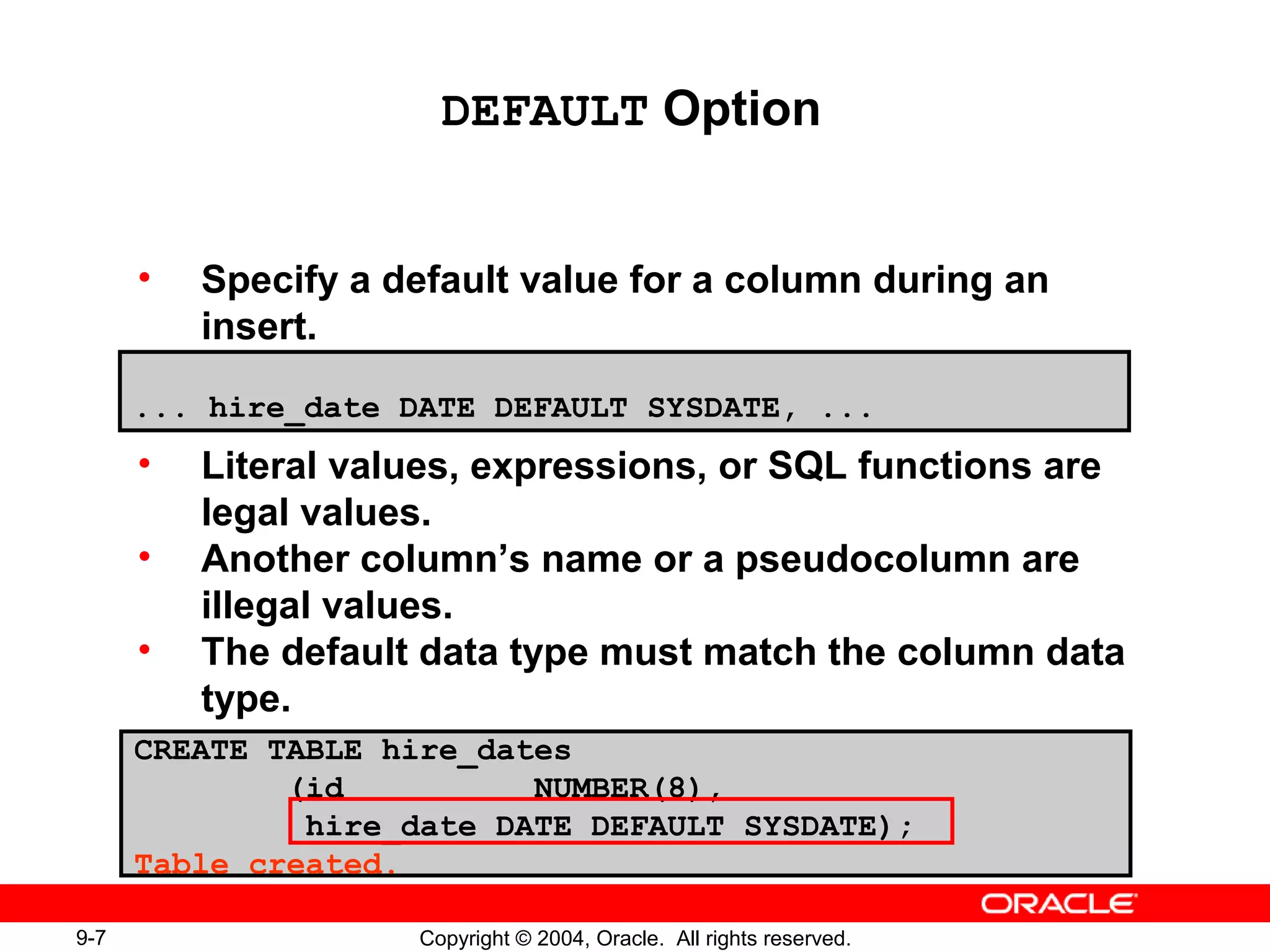

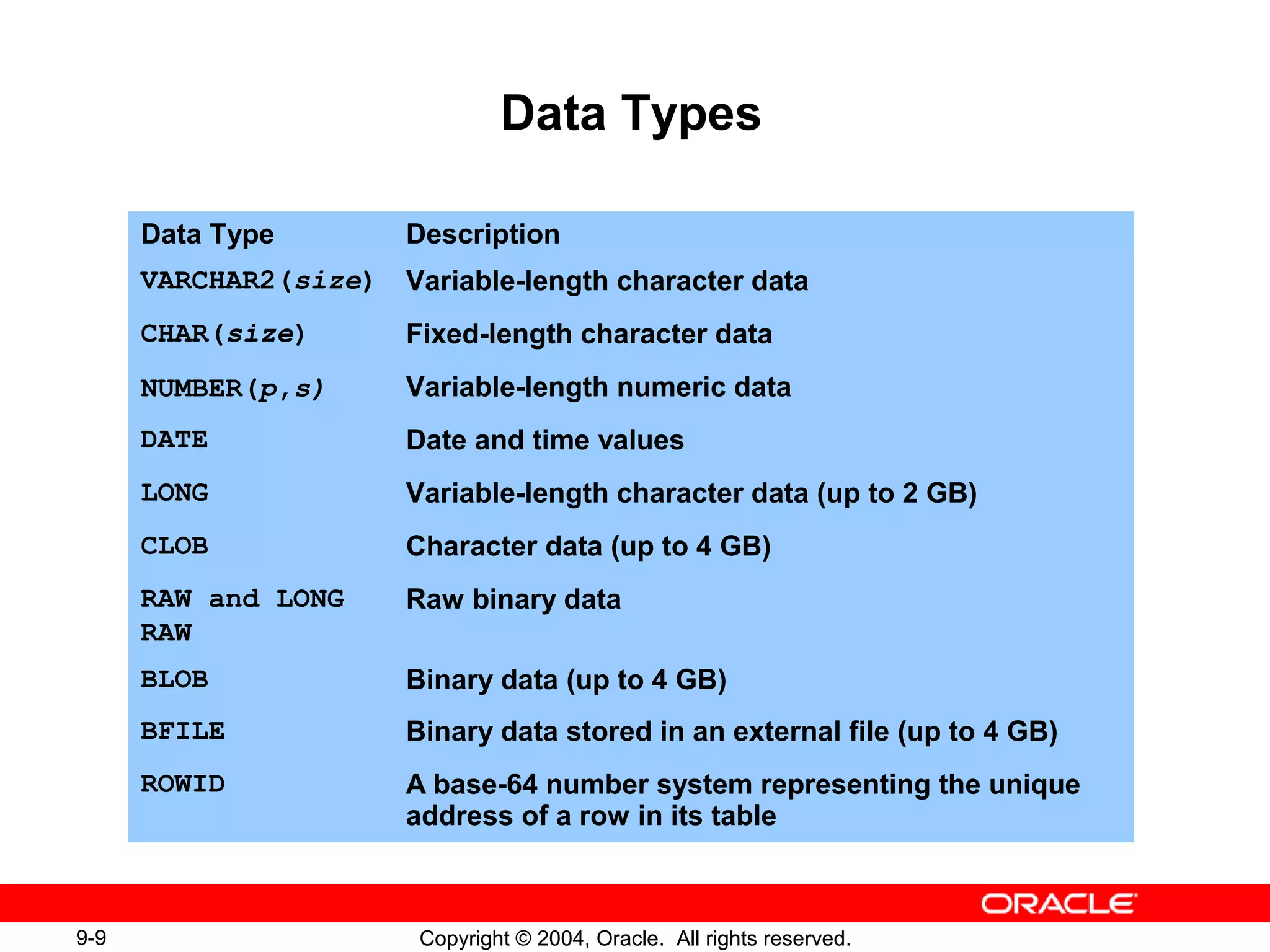
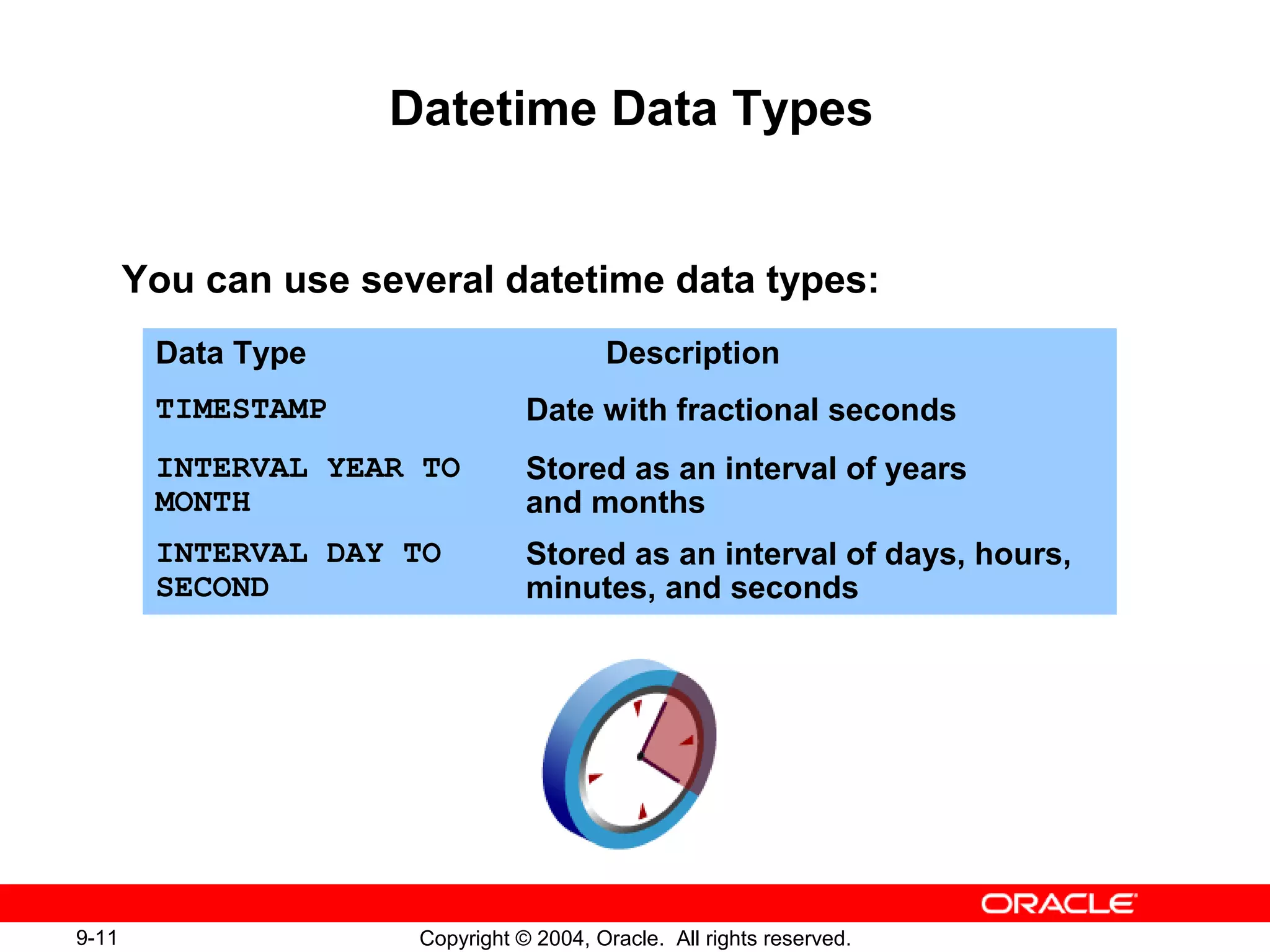
![9-12 Copyright © 2004, Oracle. All rights reserved.
Datetime Data Types
• The TIMESTAMP data type is an extension of the
DATE data type.
• It stores the year, month, and day of the DATE data
type plus hour, minute, and second values as well
as the fractional second value.
• You can optionally specify the time zone.
TIMESTAMP[(fractional_seconds_precision)]
TIMESTAMP[(fractional_seconds_precision)]
WITH TIME ZONE
TIMESTAMP[(fractional_seconds_precision)]
WITH LOCAL TIME ZONE](https://image.slidesharecdn.com/les09-100209113551-phpapp01-140417175950-phpapp02/75/plsql-Les09-11-2048.jpg)
![9-14 Copyright © 2004, Oracle. All rights reserved.
Datetime Data Types
• The INTERVAL YEAR TO MONTH data type stores a
period of time using the YEAR and MONTH datetime
fields:
• The INTERVAL DAY TO SECOND data type stores a
period of time in terms of days, hours, minutes,
and seconds:
INTERVAL YEAR [(year_precision)] TO MONTH
INTERVAL DAY [(day_precision)]
TO SECOND [(fractional_seconds_precision)]](https://image.slidesharecdn.com/les09-100209113551-phpapp01-140417175950-phpapp02/75/plsql-Les09-12-2048.jpg)
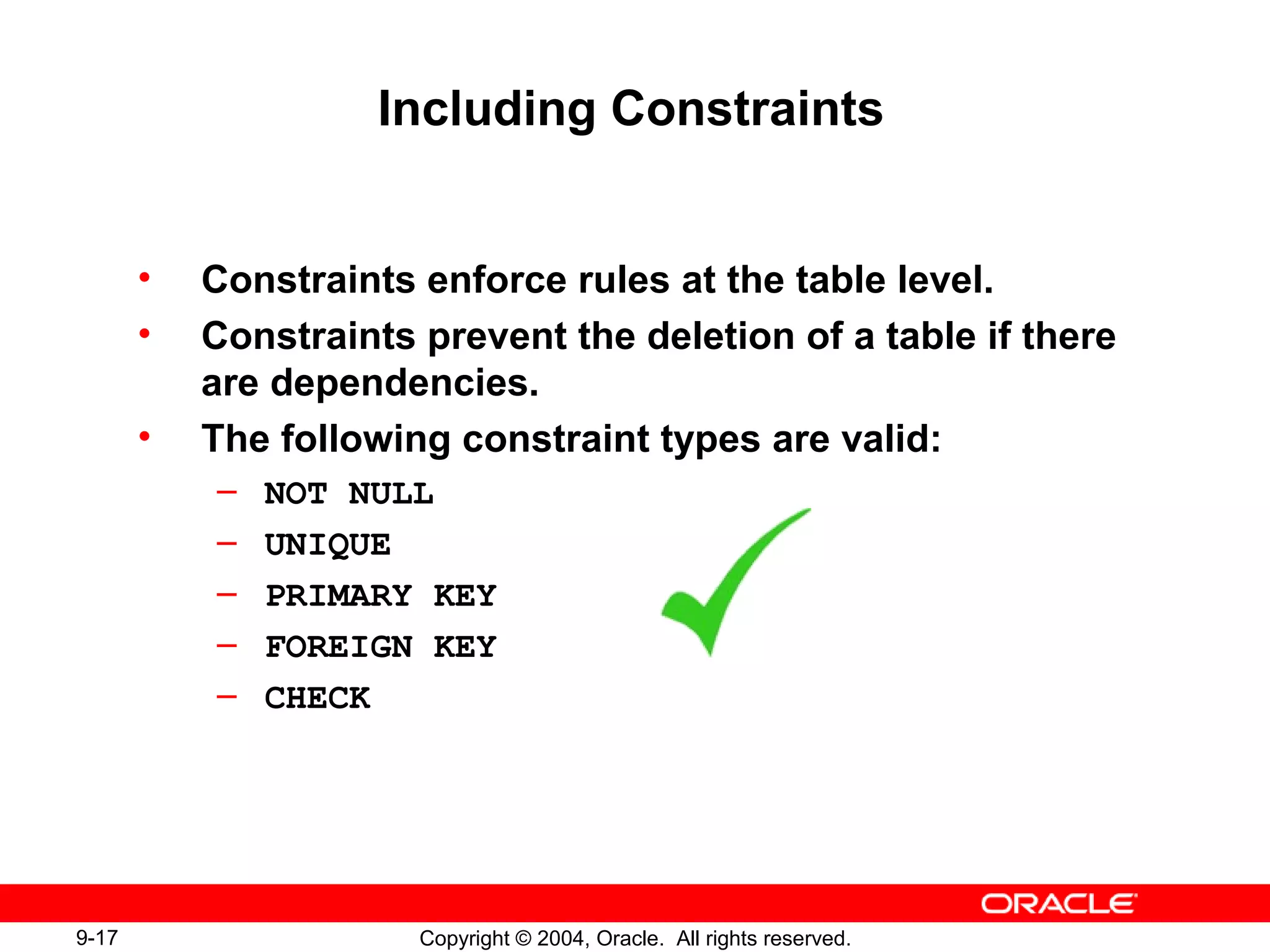
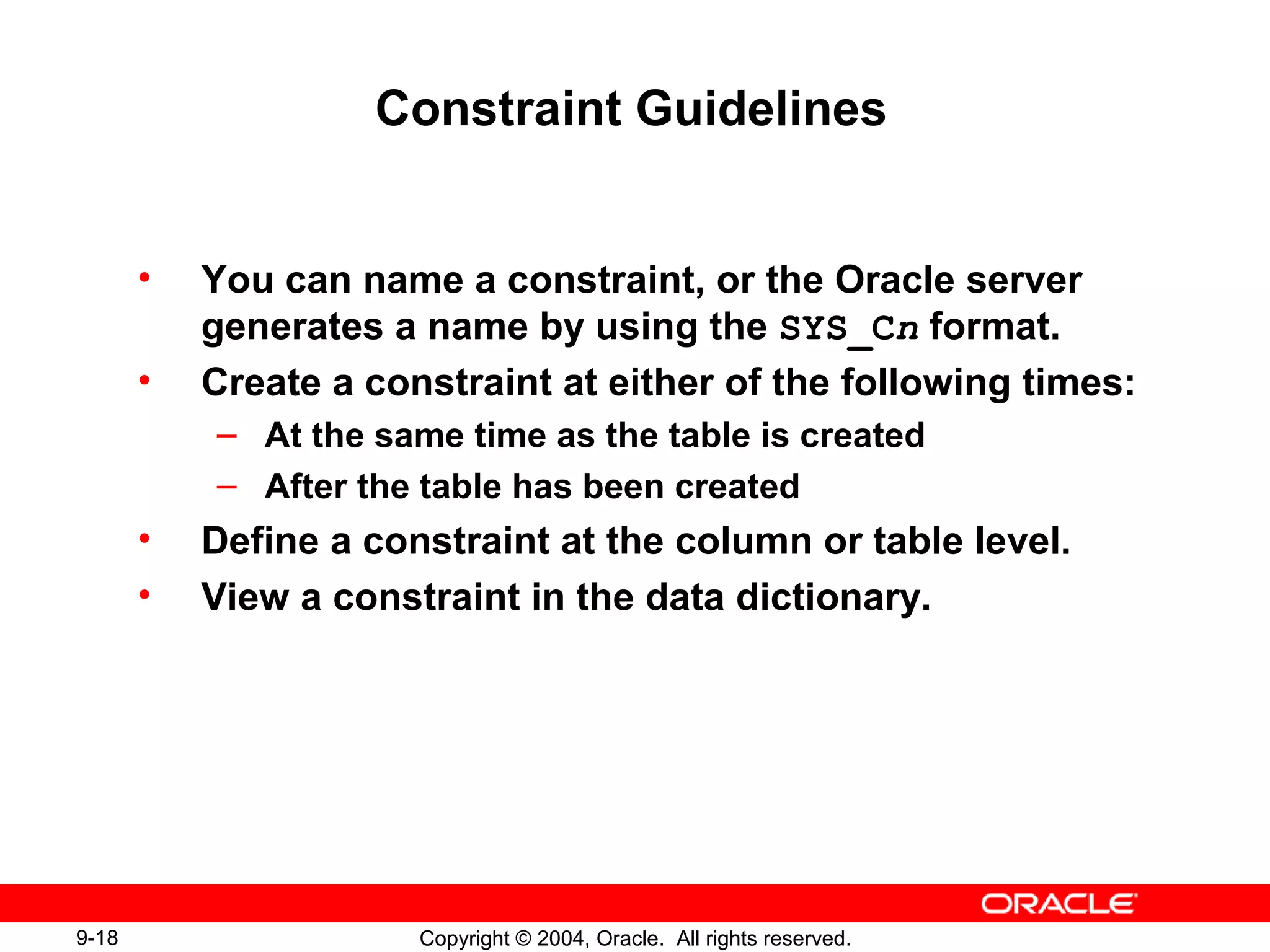
![9-19 Copyright © 2004, Oracle. All rights reserved.
Defining Constraints
• Syntax:
• Column-level constraint:
• Table-level constraint:
CREATE TABLE [schema.]table
(column datatype [DEFAULT expr]
[column_constraint],
...
[table_constraint][,...]);
column,...
[CONSTRAINT constraint_name] constraint_type
(column, ...),
column [CONSTRAINT constraint_name] constraint_type,](https://image.slidesharecdn.com/les09-100209113551-phpapp01-140417175950-phpapp02/75/plsql-Les09-15-2048.jpg)
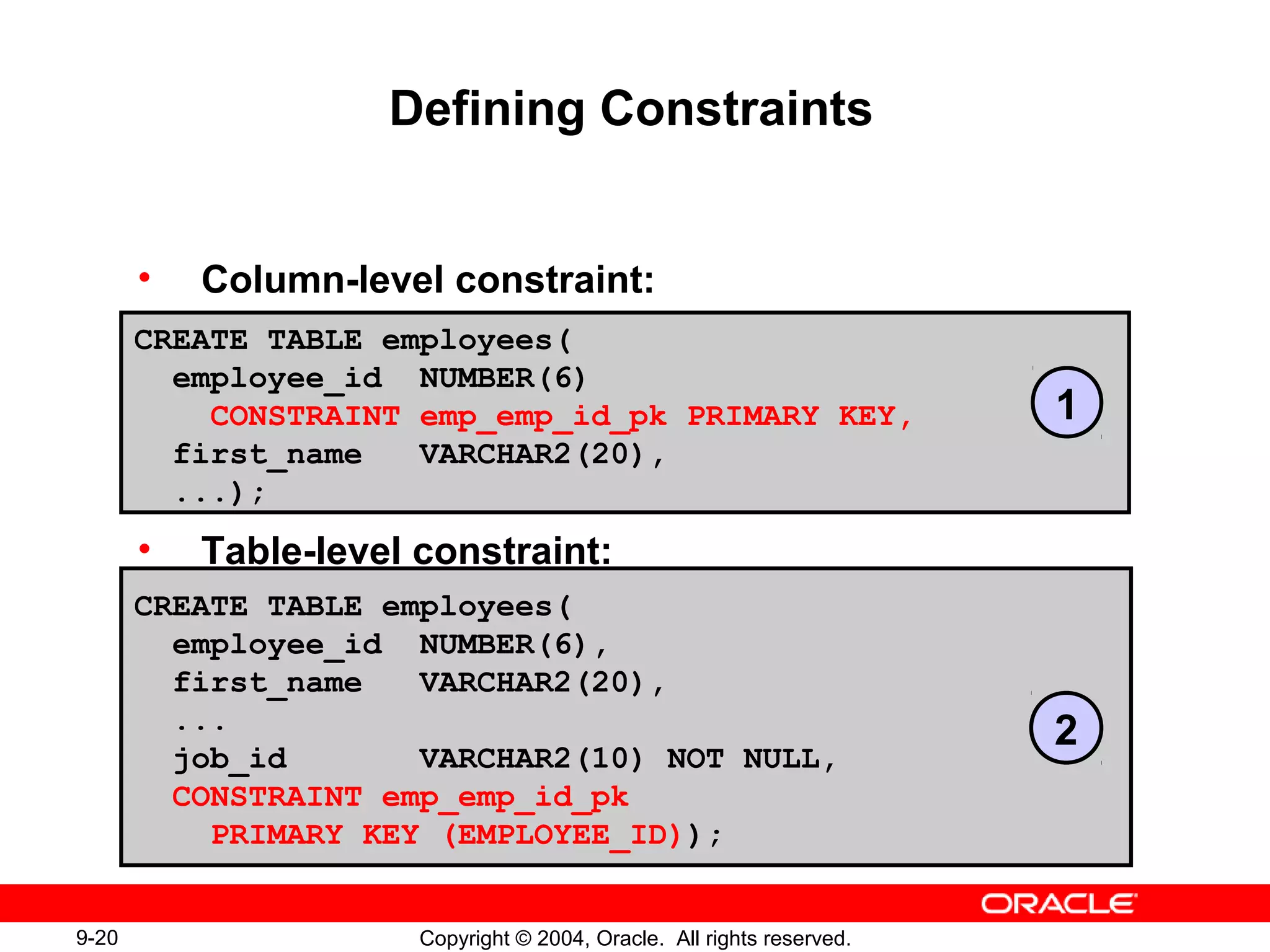
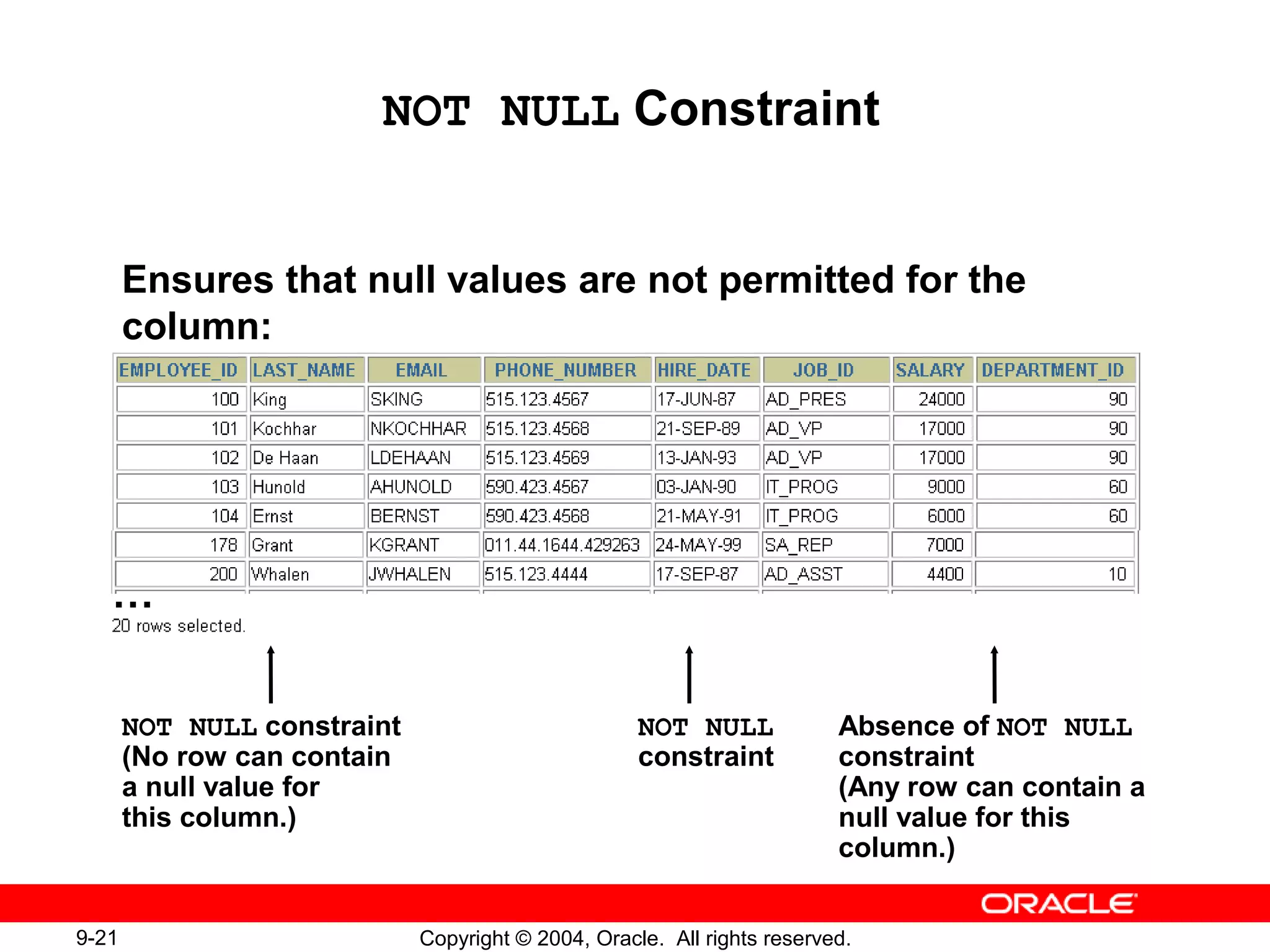
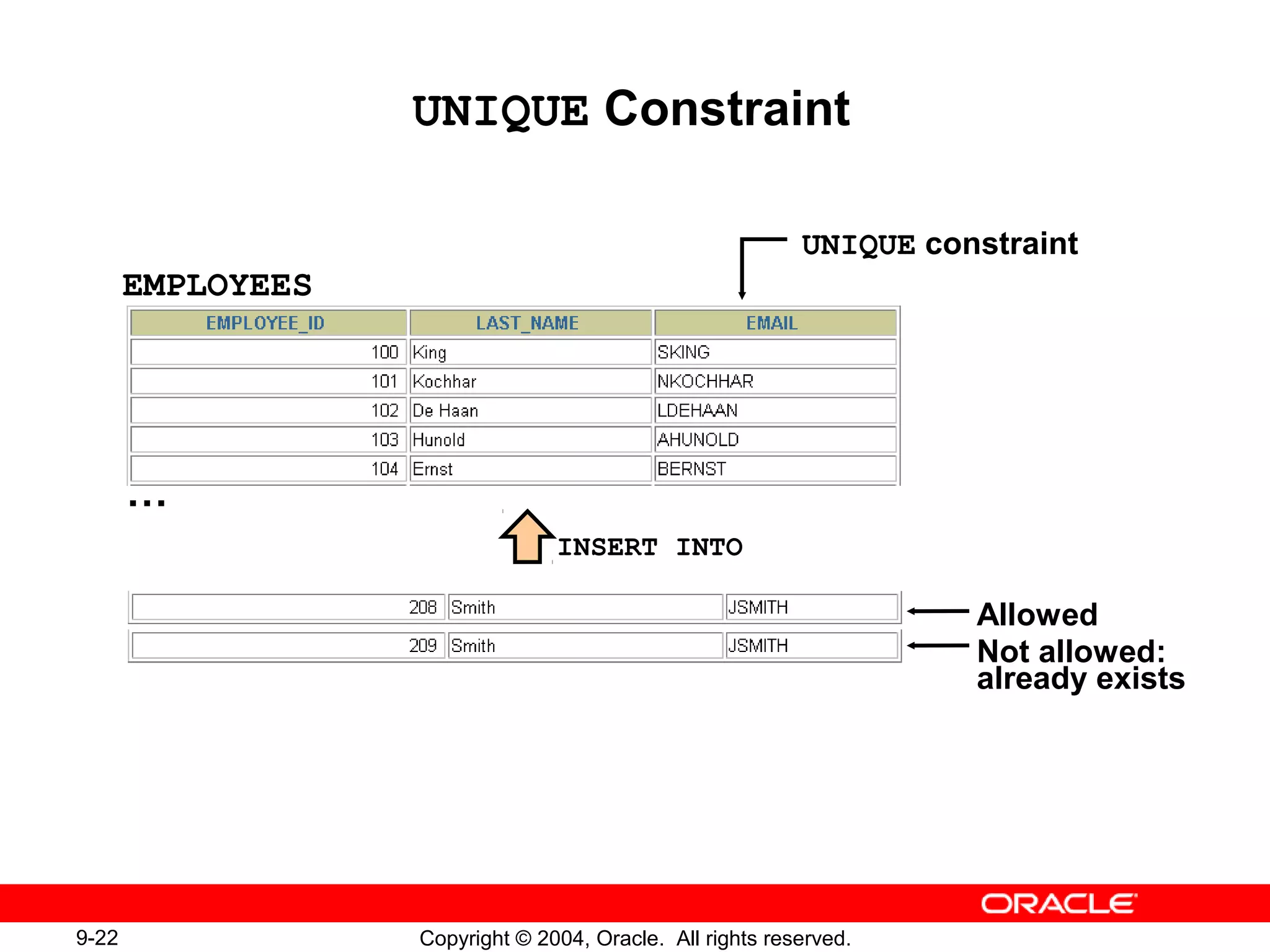
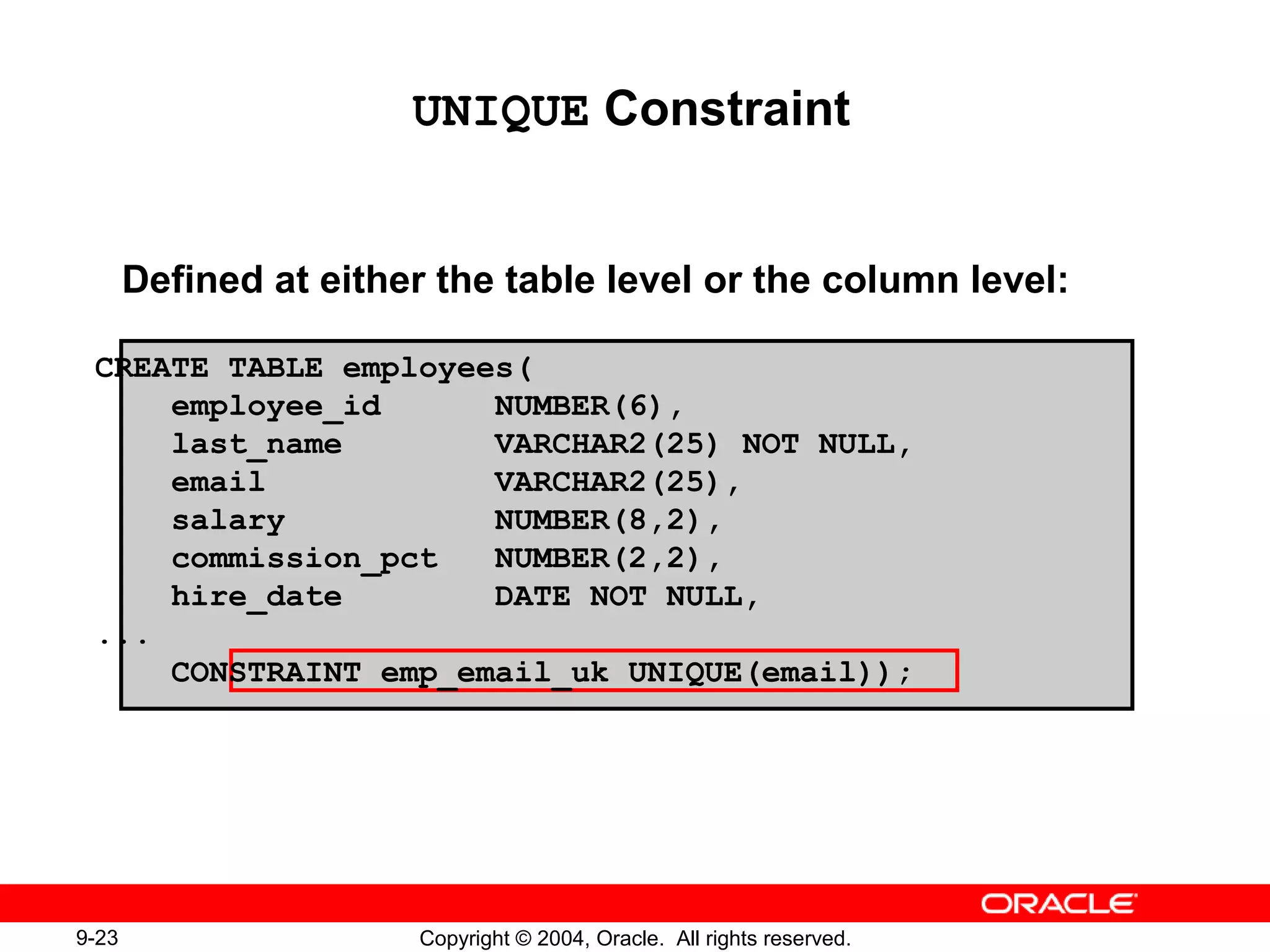
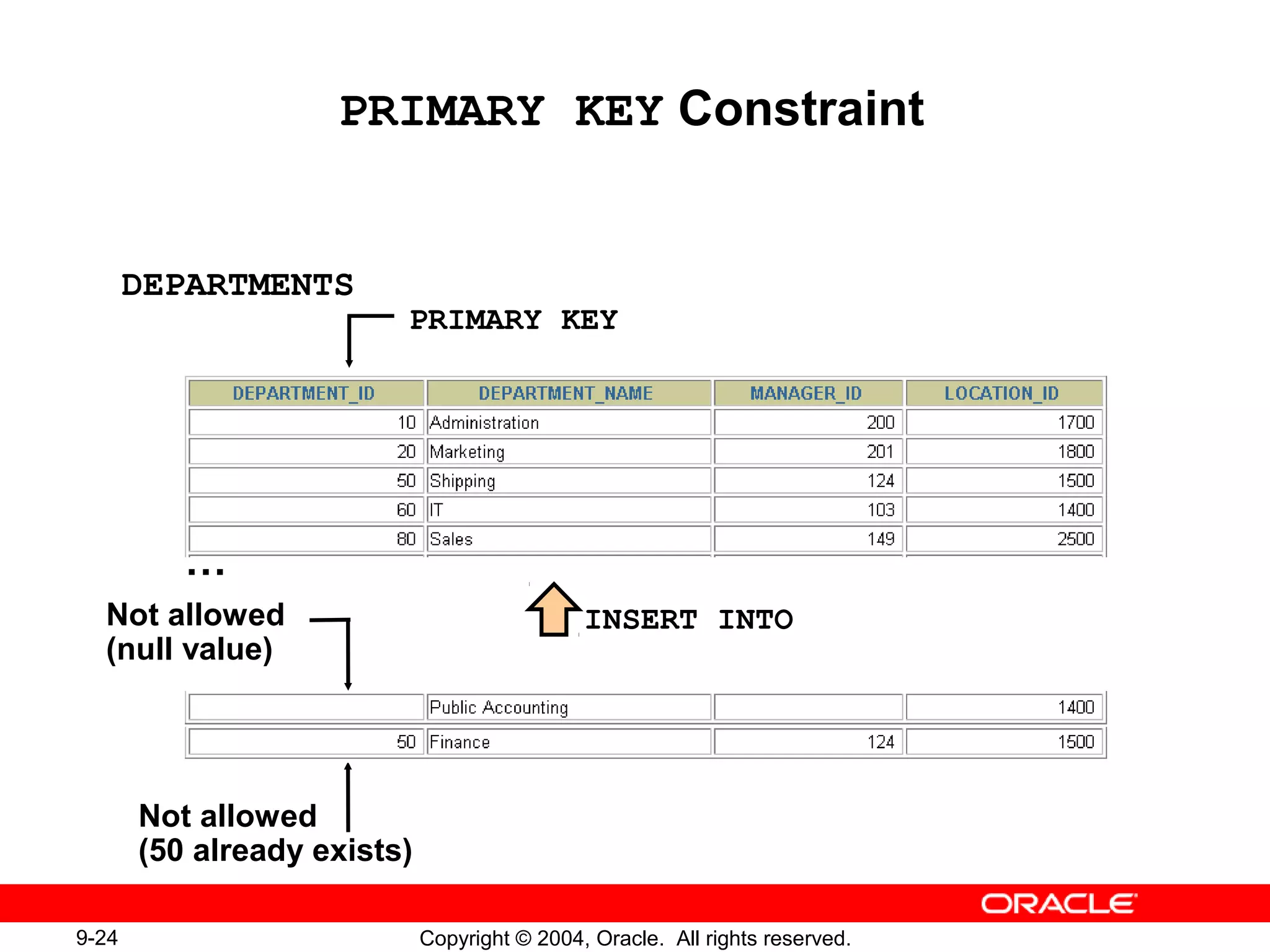
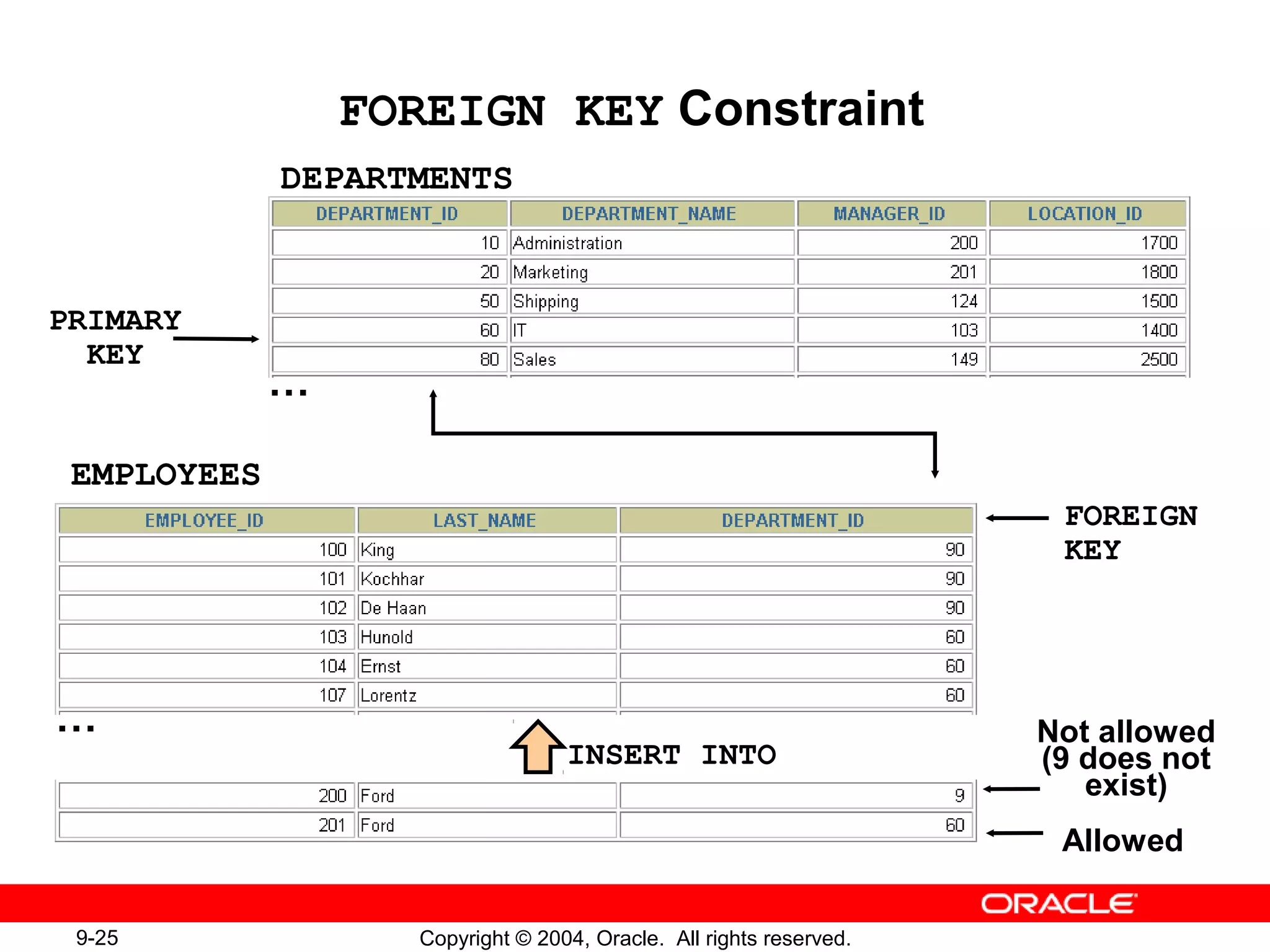
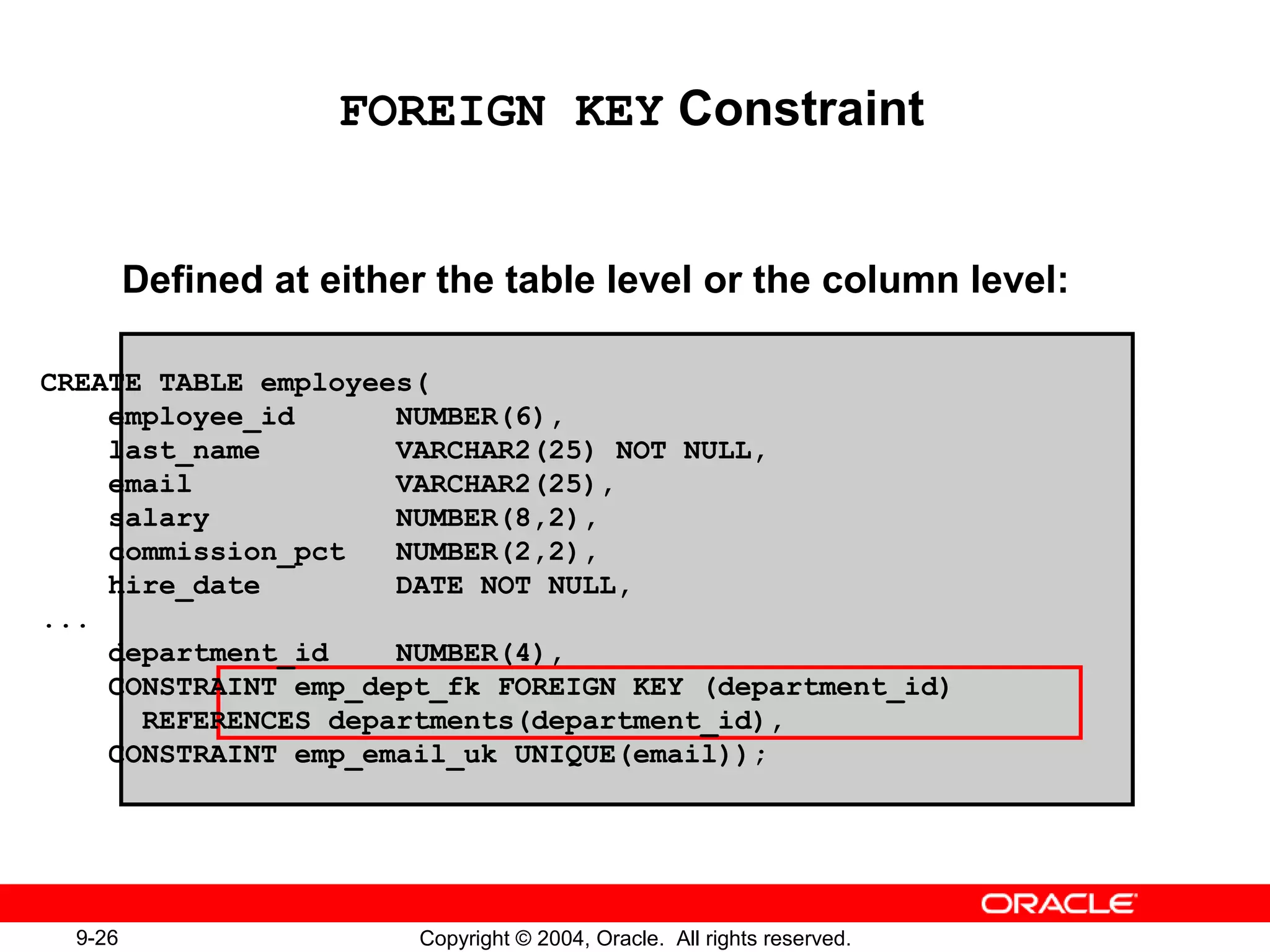
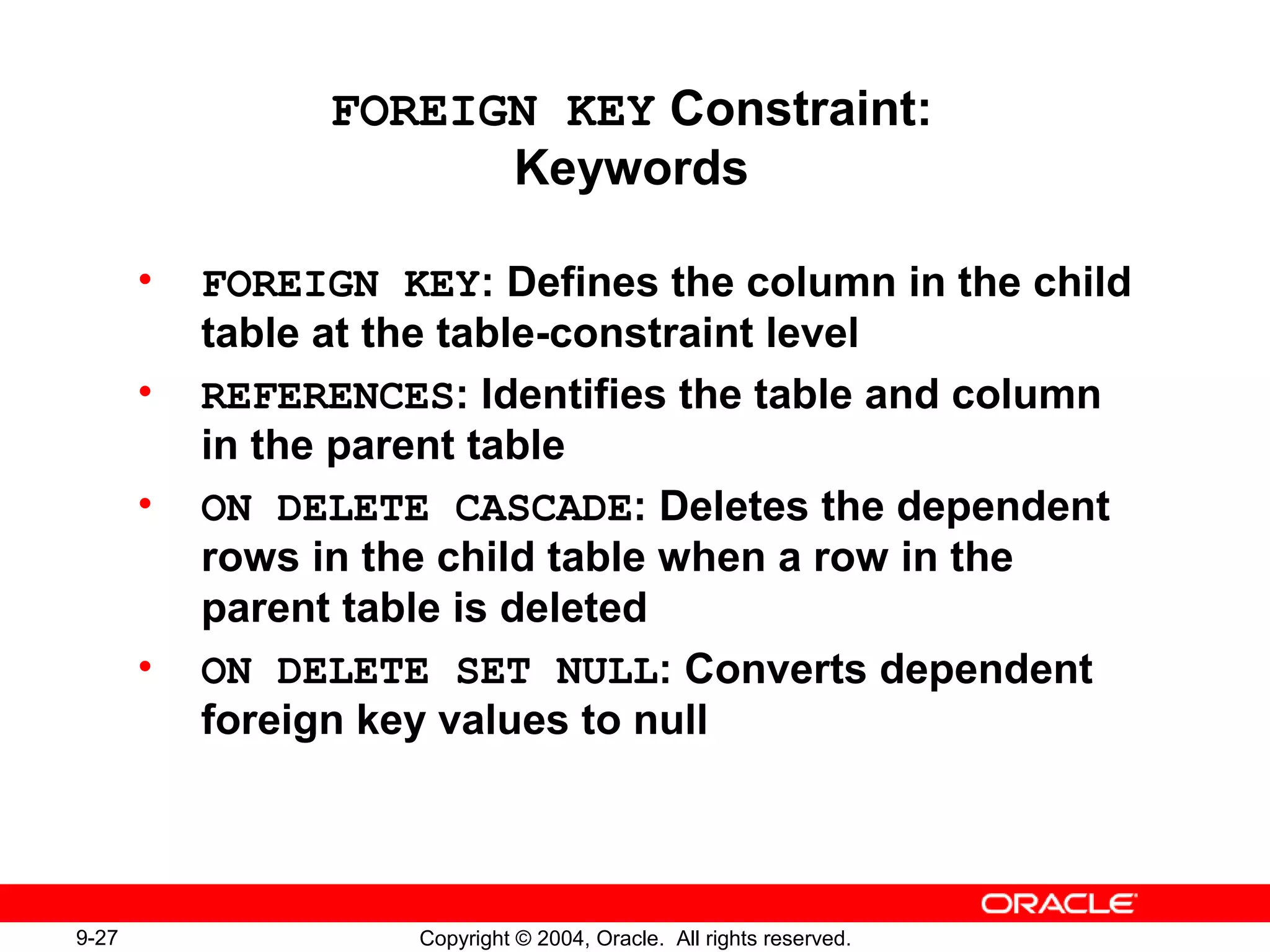
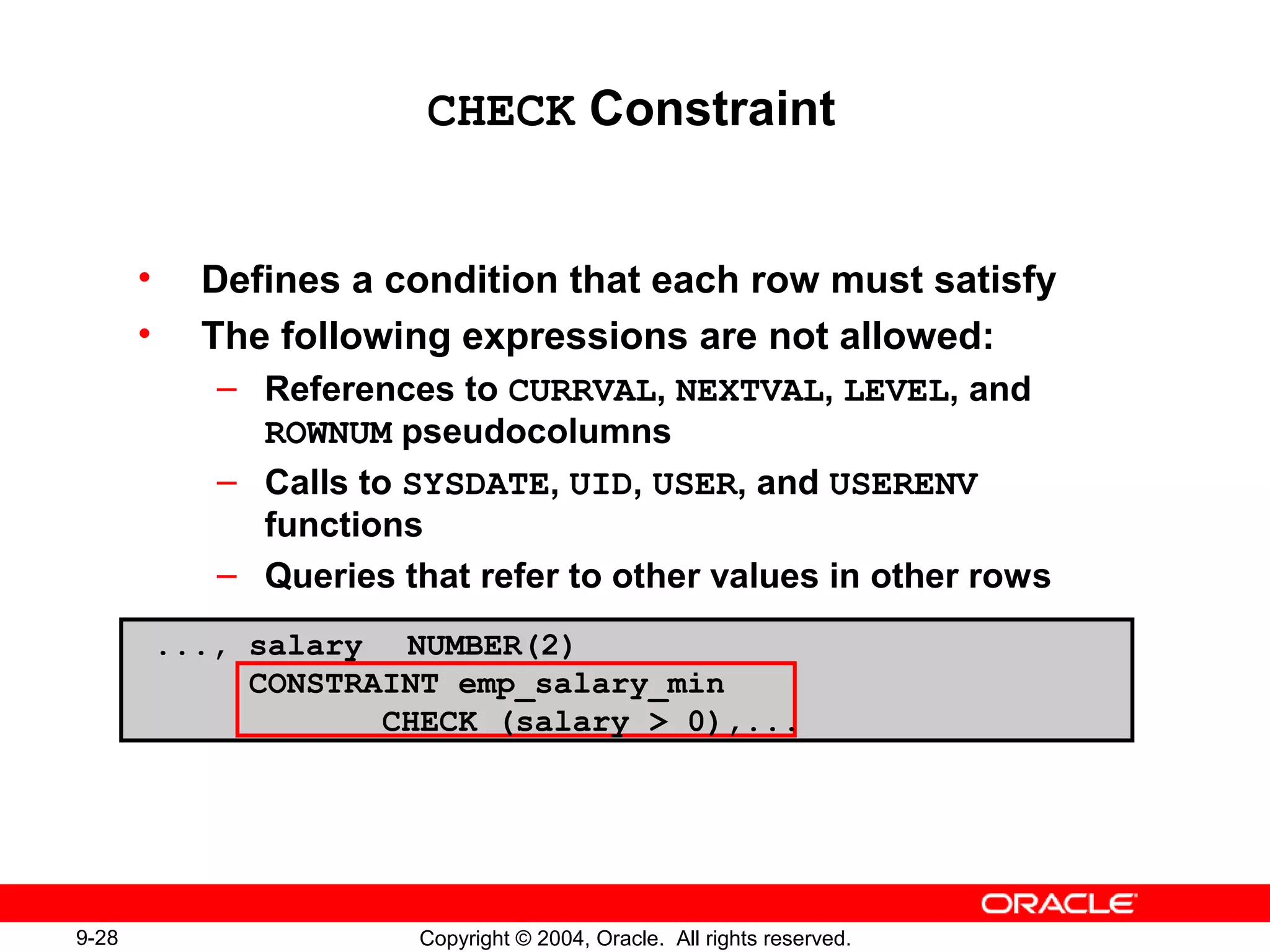

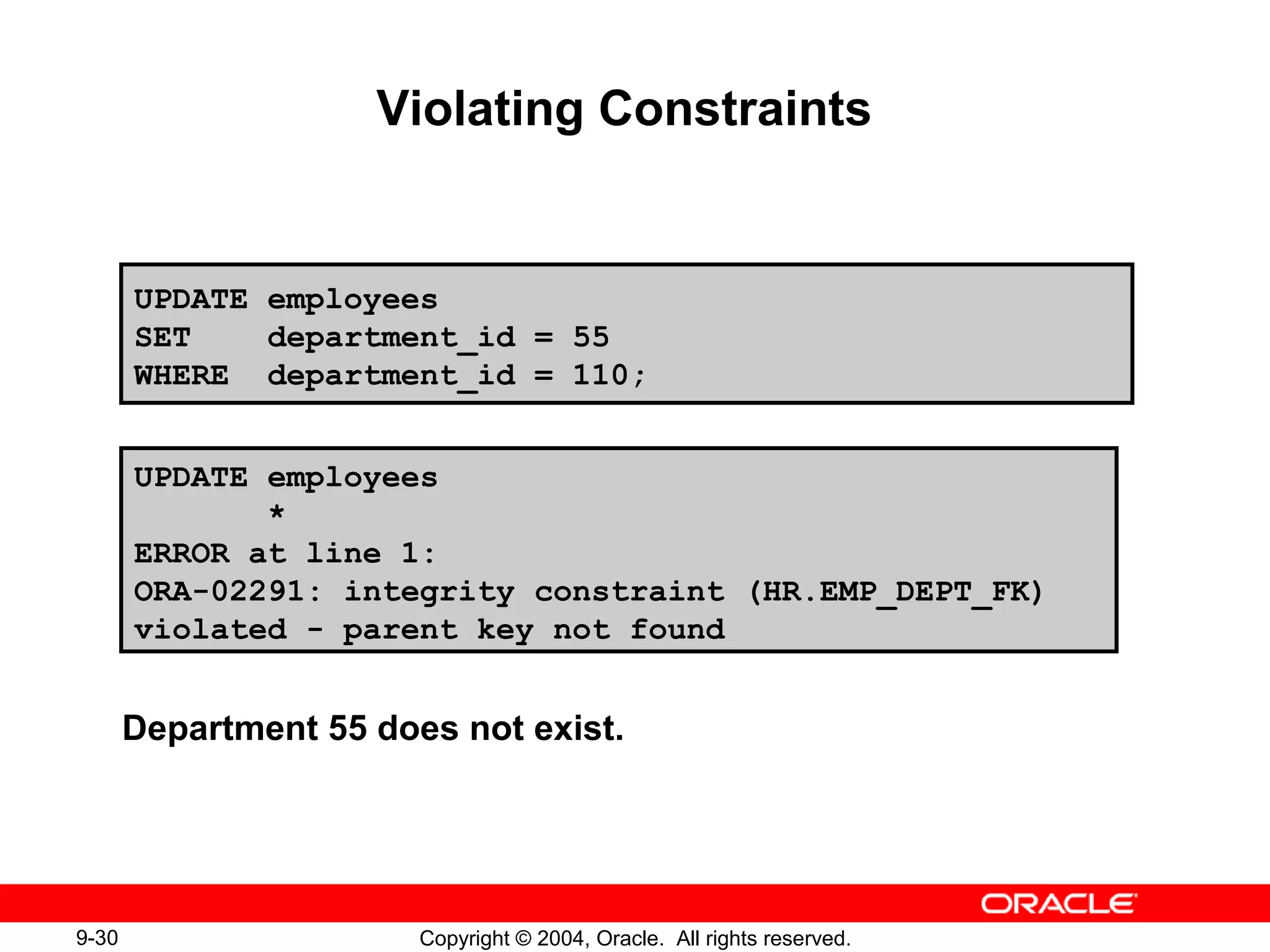
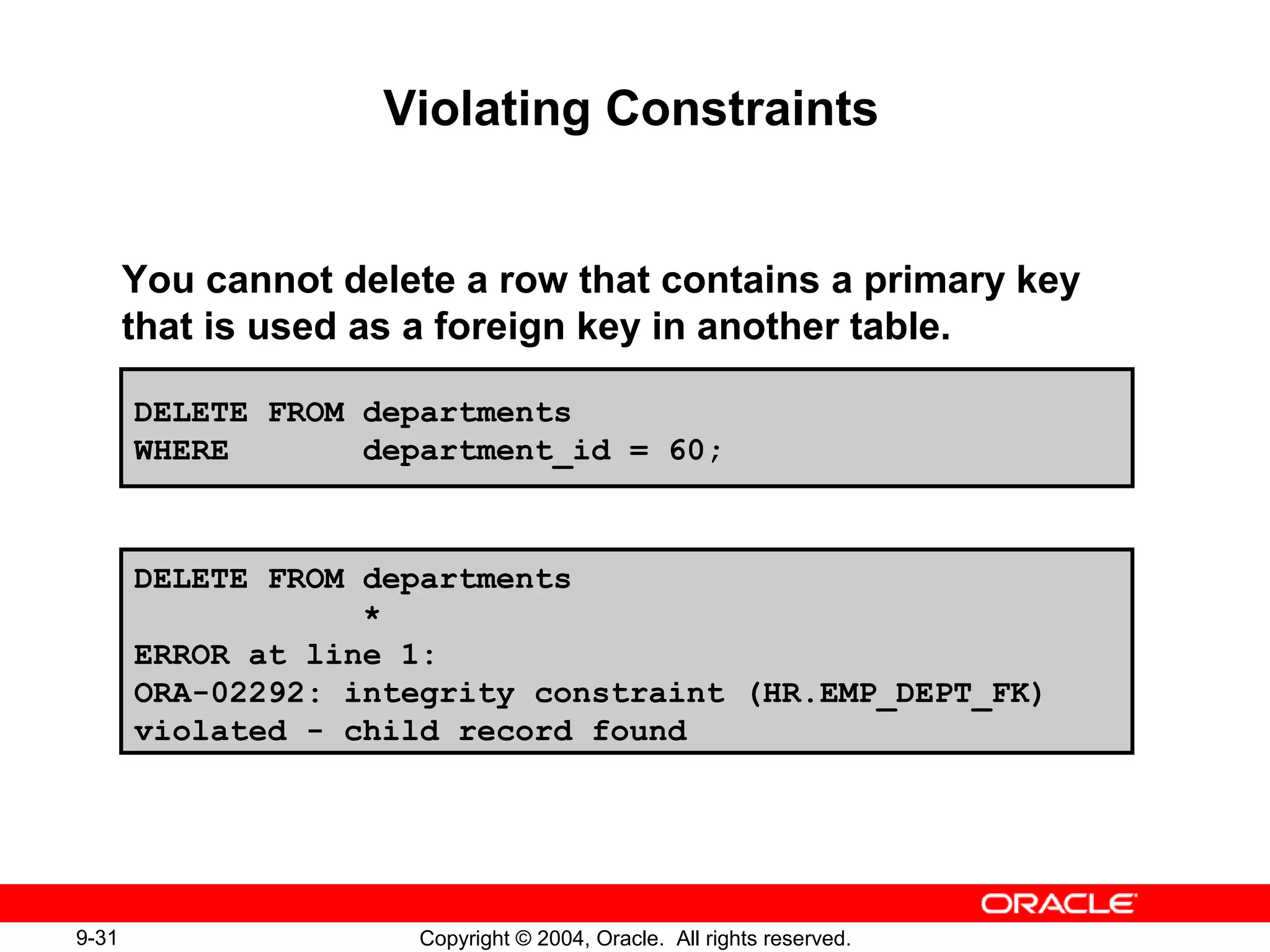
![9-32 Copyright © 2004, Oracle. All rights reserved.
Creating a Table
by Using a Subquery
• Create a table and insert rows by combining the
CREATE TABLE statement and the AS subquery
option.
• Match the number of specified columns to the
number of subquery columns.
• Define columns with column names and
default values.
CREATE TABLE table
[(column, column...)]
AS subquery;](https://image.slidesharecdn.com/les09-100209113551-phpapp01-140417175950-phpapp02/75/plsql-Les09-28-2048.jpg)
